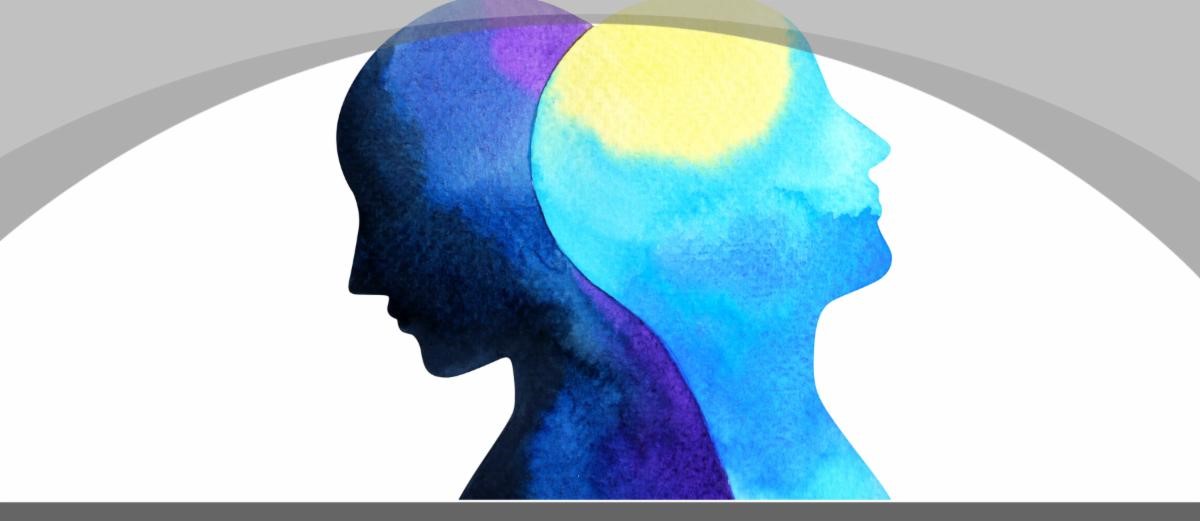Category: Blog
 By Danielle Beltz, MSN, PMHNP-BC, Psychiatric Nurse Practitioner, Lindner Center of HOPE
By Danielle Beltz, MSN, PMHNP-BC, Psychiatric Nurse Practitioner, Lindner Center of HOPE
Pregnancy and childbirth can be one of the most rewarding and fulfilling things a woman can do in her
lifetime but can hand in hand be one of most challenging and emotionally taxing times.
A female goes through not only physical changes throughout pregnancy but also hormonal, emotional,
and psychological changes. In addition, a pregnancy can bring stress and emotional hardship to their
interpersonal dynamics.
A lot of new moms experience postpartum “baby blues” after giving birth which differentiates from
postpartum depression. Symptoms usually include sadness, irritability, moodiness, crying spells, and
decreased concentration. Baby blues usually begin within 2 to 35 days after childbirth and can persist up
to 2 weeks. When these symptoms last longer than 2 weeks this is when the mother should consider talking
to a healthcare provider.
About one in seven women develop postpartum depression. It most commonly occurs 6 weeks after delivery but can begin prior to
delivery as well. According to the Diagnostic and Statistical Manual of Mental Disorders (DSM-5) a major depressive episode with the onset
of pregnancy or within 4 weeks of delivery is considered postpartum depression. Five of the nine symptoms must be present nearly every
day for at least two weeks and constitute a change from previous functioning to be diagnosed. Depression or loss of interest in addition
to the following symptoms must be present:
 • Depressed mood (subjective or observed) most of the day
• Depressed mood (subjective or observed) most of the day
• Diminished interest or pleasure in all or most activities
• Insomnia or hypersomnia
• Psychomotor agitation or retardation
• Feelings of worthlessness or guilt
• Loss of energy or fatigue
• Recurrent suicidal ideation, thoughts of death or attempts
• Diminished concentration or indecisiveness
• Change in weight or appetite (5% weight change over 1 month)
Fifty percent of postpartum major depressive episodes begin before
delivery so collectively these episodes are described as peripartum
episodes. Mothers with peripartum major depressive episodes commonly have severe anxiety and panic attacks.
The exact etiology of postpartum depression is unknown. Several factors have been reported to contribute to the development of
postpartum depression. The physical and hormonal fluctuations resulting from pregnancy influence postpartum women to develop
depression when stressful and emotional events coincide with childbirth. Some of these factors include the stress of motherhood, difficult
labor, poor financial and family support, and harmful health outcomes of childbirth. Lower socioeconomic demographic, personal or
family history of depression, anxiety, or postpartum depression, PMDD, complications in pregnancy and birth, and mothers who have
gone through infertility treatments have also all been suggested to be strong contributors.
Postpartum depression not only affects the mother’s health but also the relationship the mother has with her infant and that child’s
development. Studies have shown that children are at a greater probability of developing behavioral, cognitive, and interpersonal problems
whose mothers have postpartum depression. It can also lead to inability to breastfeed and marital conflict.
Postpartum psychosis is another severe kind of depression but is not the same thing as postpartum depression. Around 1 in 500 or 1 in
1,000 women has postpartum psychosis after delivering a baby. It commonly starts the first 2 weeks after giving birth. Women who are
also diagnosed with bipolar disorder or schizoaffective disorder are more prone to have postpartum psychosis than women who are not
diagnosed with other mental health conditions.
Postpartum psychosis is considered a psychiatric emergency with a capacity of suicide and infanticidal threat. Some symptoms include
delusions, hallucinations, unusual behavior, paranoia, and sleep disturbances. If postpartum psychosis is suspected help should be sought
immediately.
Psychotherapy and antidepressant medications are the first line treatments for postpartum depression. Psychotherapy is considered first
line for women with mild to moderate depression or if they have concerns of starting a medication while breastfeeding. For moderate to
severe depression therapy and antidepressant medications are recommended. The most common medication for postpartum depression is
an SSRI or selective serotonin reuptake inhibitor. Once an efficacious dose is reached, treatment should persist for 6-12 months to prevent
relapse of symptoms. Risk versus benefits of treated versus untreated depression while breastfeeding or pregnant should be discussed.
Transcranial Magnetic Stimulation (TMS) is an alternate therapy that can be used for women who have concerns about their child being
exposed to a medication. Although, the risk of taking an SSRI while breastfeeding is relatively low. ECT is another option for women with
severe postpartum depression who do not respond to traditional treatment. It can be particularly helpful with psychotic depression.
Zurzuvae (zuranolone) is the first oral medication approved by the FDA specifically for the treatment of postpartum depression in adults.
Until August 2023, treatment for PPD was only available as an IV (Brexanolone) and was only available at certified healthcare facilities.
People with depression especially new mothers and postpartum mothers may not identify or accept that they’re depressed. They also
may be unaware of the signs and symptoms of depression. If you are questioning whether a friend or family member has postpartum
depression or is developing signs of postpartum psychosis, assist them in pursuing medical treatment and recognize that help is accessible.
References:
American Psychiatric Association. (2013). Diagnostic and statistical manual of mental disorders (5th ed.). Washington, DC: Author.
Commissioner, O. of the. (n.d.). FDA approves first oral treatment for postpartum depression. U.S. Food and Drug Administration. https://www.fda.
gov/news-events/press-announcements/fda-approves-first-oral-treatment-postpartum-depression#:~:text=Today%2C%20the%20U.S.%20Food%20
and,the%20later%20stages%20of%20pregnancy
Guo, L. , Zhang, J. , Mu, L. & Ye, Z. (2020). Preventing Postpartum Depression With Mindful Self-Compassion Intervention. The Journal of Nervous and
Mental Disease, 208 (2), 101-107. doi: 10.1097/NMD.0000000000001096.
Mayo Foundation for Medical Education and Research. (2023, April 14). “I’m happy to be a new mom. but why am I feeling
so sad?” Mayo Clinic. https://mcpress.mayoclinic.org/mental-health/im-happy-to-be-a-new-mom-but-why-am-i-feeling-sosad/?
mc_id=global&utm_source=webpage&utm_medium=l&utm_content=epsmentalhealth&utm_
campaign=mayoclinic&geo=global&placementsite=enterprise&invsrc=other&cauid=177193
Miller, L. J. (2002). Postpartum depression. JAMA : The Journal of the American Medical Association, 287(6), 762-765. https://doi.org/10.1001/jama.287.6.762
Mughal S, Azhar Y, Siddiqui W. Postpartum Depression. [Updated 2022 Oct 7]. In: StatPearls [Internet]. Treasure Island (FL): StatPearls Publishing; 2023
Jan-. Available from: https://www.ncbi.nlm.nih.gov/books/NBK519070/
Postpartum depression. March of Dimes. (n.d.). https://www.marchofdimes.org/find-support/topics/postpartum/postpartum-depression?gad_
source=1&gclid=EAIaIQobChMIqKLemfTfggMVq0VyCh3ouwGDEAAYBCAAEgKxjPD_BwE
Silverman, M. E., Reichenberg, A., Savitz, D. A., Cnattingius, S., Lichtenstein, P., Hultman, C. M., Larsson, H., & Sandin, S. (2017). The risk factors for postpartum
depression: A population-based study. Depression and Anxiety, 34(2), 178–187. https://doi-org.uc.idm.oclc.org/10.1002/da.22597
Stewart, D. E., & Vigod, S. (2016). Postpartum depression. The New England Journal of Medicine, 375(22), 2177-2186. https://doi.org/10.1056/NEJMcp1607649













